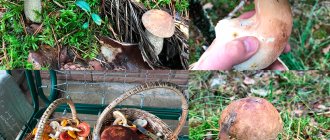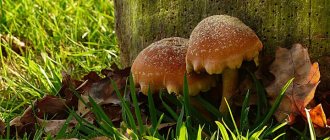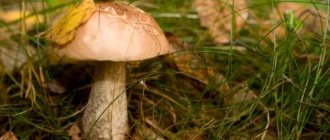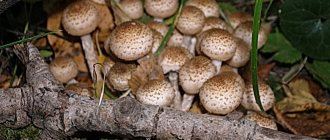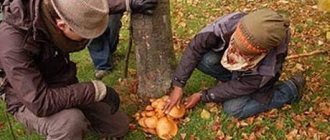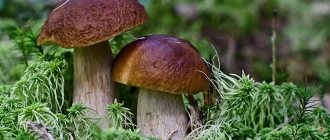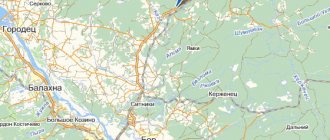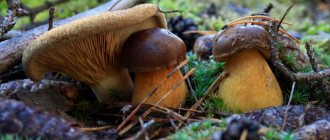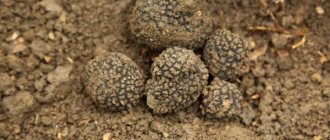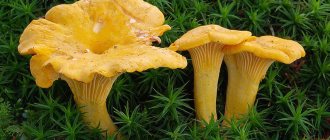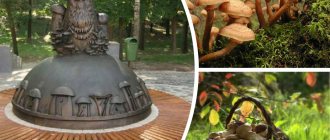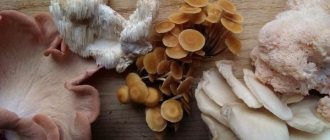About 200 species of mushrooms, the most valuable nutritious products, grow on the territory of Russia. The so-called “silent hunt” is not only a pleasant pastime, enjoying the singing of birds and the chirping of grasshoppers. This is a special art. It will take a lot of time to learn to distinguish, for example, a greenfinch from a sulfur-yellow row or a gall mushroom from a white one. And in order to return after several hours of wandering between birch and pine trees with a full basket of edible beauties, you need to thoroughly study all the mushroom places in the Vladimir region.
How to pick mushrooms correctly?
Tubular mushrooms, which are used in cooking together with the stem, are advised to be carefully twisted, turning first in one direction or the other. And for lamellar ones, where only the caps are eaten, it is recommended to stock up on a sharp knife. This way, all mushroom places in the Vladimir region will be kept safe and sound. Equally important is the fact that in the absence of these lower spore plants, certain tree species are not able to develop normally.
Trophy places of “silent hunting” in the region
There are 16 municipalities in the Vladimir region, but not all of them are of interest to mushroom pickers. Some places can be reached by private vehicle, while others can be reached by train. It is important to remember: a GPS navigator will be a good assistant; there have been cases when unlucky “hunters” spent a long time looking for their car instead of mushrooms.
The north of the region is represented by four municipalities that are not very generous with the gifts of nature: Aleksandrovsky, Kovrovsky, Kameshkovsky, Suzdal.
Expert opinion
Gennady Sergeevich Rylov
A great expert in mycology and an avid mushroom picker. Knows everything about mushrooms, their types and places of growth
There are a lot of mushroom places here; the natives not only won’t share them, but also carefully protect the myceliums of boletus, chanterelles, boletus, boletus, and boletus.
In the south, in Malenkovsky and Gus-Khrustalny municipalities, the picture changes dramatically. Chanterelles, boletus, boletus, boletus will fill even capacious baskets. It is possible to collect the gifts of nature from the early spring warming of the soil until the first frost.
In the west, at a decent distance from the regional center, are the Sudogodsky and Sobinsky districts. Here they go out to “hunt” for boletus and aspen boletuses. If preference is given to white or chanterelles, welcome to the east - Muromsky, Selivanovsky, Gorokhovetsky municipalities.
Where there is nothing at all to do, especially for beginners, are the Petushinsky and Yuryev-Polsky districts, there are plenty of mushroom places here.
What trophies are “hunted” depending on the season?
The mycelium tends to develop at a stable ambient temperature of 7°C. The second indispensable condition is the moisture of the soil and the degree of heating. During the warm winter in the Vladimir region, representatives of the mushroom kingdom pull caps from the ground at the end of March. True, most of them are inedible.
In the summer, if there is drying heat, then there is no need to expect large harvests. A cold snap and a one-time, but heavy rain can turn the situation around. Ten days later, that’s how long it takes for the mushrooms to grow, you can safely go hunting.
If August accounts for 50% of the harvest, then in September it drops to 35%, October - 15%.
| Type/month | April | May | June | July | August | September | October |
| Borovik | – | – | + | + | + | + | + |
| boletus | – | – | + | + | + | + | – |
| Ryzhik | – | – | – | – | + | + | + |
| Gruzd | – | – | – | + | + | + | + |
| Oiler | – | – | – | – | + | + | – |
| Boletus | – | – | + | + | + | + | + |
| Polish mushroom | – | – | – | – | + | – | – |
| Dubovik | – | – | – | + | + | + | – |
| Volnushka | – | – | – | – | + | + | + |
| Valuy | – | – | – | + | + | + | – |
| Gorkushka | – | – | – | + | + | + | – |
| Ryadovka | – | – | – | – | – | + | – |
| Violin | – | – | – | – | – | + | – |
| Morel | + | + | + | – | – | – | – |
In conclusion, I would like to remind you of a couple of rules that will save an unlucky mushroom picker from harm. Stay away from highways and industrial areas; representatives of various types of mushrooms, like a sponge, absorb toxins and exhaust fumes.
There is no need to be a barbarian, just enjoy the “quiet hunt”. And there is no need to reach out to individuals who raise even the slightest doubt.
Baskets to the brim!
A small map of mushroom places in the Vladimir region, compiled by local residents
The village of Sushnevo is a treasured place for mushroom pickers. True, serious competition during the daytime disrupts all the pleasure of the “quiet hunt”. But you can pick up a lot of boletuses, honey mushrooms. There are white people. They get to the station by train, then further into the forest - on foot.
In the Orgtrud microdistrict, right behind the residential buildings, there is a pine forest - there are not many mushrooms here, but further on there are birch groves where you can get some fragrant chanterelles. And if you’re not too lazy, you can find stately white caps in the depths under powerful oak trees. There are dense thickets of raspberries all around.
The surroundings of the village of Golovino are rich in saffron milk caps. The forest begins immediately behind the School bus stop. It is enough to arrive there by suburban public transport - and in a few hours your basket will be full of mushrooms.
In Baigushi, not far from residential buildings, there is a pine forest. If you go a little further, you can stumble upon gorgeous meadows with boletus. It’s easier to get here from another area by taking the Vladimir-Baraki bus, which runs regularly.
Last attempt: there will be mushrooms in the Vladimir region next weekend
This year has been extremely unsuccessful for mushroom pickers. At first there was heat and great dryness for two months, even toadstools did not grow. At the end of September it started to rain, but it became cold and cloudy. And mushrooms, oddly enough, also need the sun - the earth must warm up at least a little. Many people no longer count on the fact that even chanterelles can be found in the forests, not to mention saffron milk caps and white ones. But in vain.
Experienced Vladimir mushroom pickers say that “mushroom luck” may still smile in the coming days. This weekend, after the rains, they promise warmth, which will help the last attempt at a “quiet hunt.” But, of course, you need to know the places.
— I have an acquaintance, an experienced mushroom picker, who went to the forest near the village of Korovino, Vyaznikovsky district, last week and found 15 porcini mushrooms. But still there is no mass mushroom, the nights are cold. Of course, chanterelles, boletus, and boletus pop out, but they are few. It’s raining now, and they promise warmth by the weekend - this is just the weather for mushroom growth, I think we need to check it out and go to the forest,” said mushroom picker Vladimir Akiryev and highlighted several places where you should go on the weekend.
1. On the borders of the Selivanovsky and Sudogodsky districts, in the area of the villages of Gonobilovo, Krasnaya Kolpinka, Ivonino - there is a high probability of finding saffron milk caps.
2. On the border with Vyazniki, near the village of Chertkovo, you will find a porcini mushroom; it can also be found in the Suzdal region, in the village of Goritsy.
3. Closer to Vladimir there is the village of Tyurmerovka, in the forests of which you can also find white mushrooms, milk mushrooms, aspen mushrooms and boletus mushrooms also grow there. Mushrooms can also be found in the Sudogdy area.
“In dry pine places, boletus, saffron milk caps and boletus grow, and white boletus can even be found next to birch, pine, spruce or oak,” explains the mushroom picker. - Therefore, it is not necessary to travel far, especially if you do not know the area. Lately, many mushroom pickers have been disappearing in the forests. And my advice: rely on your own strengths, don’t go too far. Sometimes you can stumble upon a mushroom clearing near the road.
A connoisseur of Vladimir nature and an experienced mushroom picker, Denis Dudenkov, head of the nature department of the Vladimir-Suzdal Museum-Reserve, recently found a whole basket of boletus mushrooms in the Kameshkovsky district, in the vicinity of the village of Glazovo.
“You need to go to damp places where there are permanent reservoirs, the same swamps, and so that trees grow on the banks with which fungi form mycorrhiza: these are birch, aspen, spruce,” said Denis Dudenkov. - Indeed, there are no mushrooms in dry places now, but in the lowlands, near the swamps, they have begun to appear. It’s difficult to find milk mushrooms and trumpets now. But it’s not too late to go to the forest for other mushrooms, although it’s hard to say that there will be an abundance. I would like to note that although there are few mushrooms this year, they are clean, as people say, without worms. Fungus gnat larvae actually live in them. I was driving from the village of Prudy to Suzdal, and there were a lot of cars on the roads. Obviously, people came to the forest to pick mushrooms.
Little-known mushroom places in the Vladimir region
They either don’t know these towns or don’t like them because they have to walk for a long time. To get to the Shepelevo mixed forest, you first need to go through the fields. Because of this, only local residents come here.
The Moshok forests are shrouded in such legends that it is impossible to tell now what is fiction and what is true. However, it is a fact that the lands here are fertile. Of course, sharing secrets with the village elders is not profitable, which means you shouldn’t really listen to their advice. They can send you so far away that there will be no chance to get out. But it’s not difficult to get there on your own. Along the Murom highway to the village, then, following the sign, towards the village of Krasny Kust. Attention! The forest is on the right, and the swamp is on the left.
Another map of mushroom places in the Vladimir region is based on division by district. The most attractive: Vyaznikovsky and Melenkovsky (rated by forestry workers at 5 points), Gorokhovetsky and Muromsky (4 points, respectively). Most mushrooms are in the lowlands. The harvest also depends on changeable weather.
Mushrooms in the forests of the Vladimir region, where do they grow?
Finding mushrooms in deciduous and coniferous forests, pastures and even meadows is not difficult. The favorable climate of the region, combined with precipitation, play a significant role in the germination of any mushrooms, from edible to poisonous, not suitable for consumption.
Active fruiting begins in mid-August and ends only with the onset of cold weather. The first frosts stop germination, sending the mycelium into a dormant state until the next season.
In addition to germinating in forest areas, mushrooms can also be found in open areas. Meadow honey mushrooms, bluelegs, boletus and the champignon family are easy to find in tall grass or where weeds are growing.
To avoid getting lost in unfamiliar places, you should take a GPS navigator with you when searching for food crops. With its help, it will be easy to get out of the forest without losing your car parked in the forest.
Poisonous mushrooms
The most dangerous mushrooms in the Vladimir region are, first of all, pale toadstool, pink-plated mushroom, southern chanterelle, fly agaric, satanic mushroom, and orange-red cobweb.
The pale grebe may have a bell-shaped and flat cap with a slight convexity with a diameter of no more than 10 cm. The colors are most often greenish, brownish-yellow, less often white. Sometimes light flakes appear on the cap. The leg is straight, about 12 cm high, with a striped ring. The mushroom is very poisonous. Unfortunately, the forests of the Vladimir region are extremely rich in them. The period for symptoms of poisoning to appear (nausea, foam at the mouth, pain, hallucinations, delirium) is up to half a day.
The cobweb has a smooth brownish cap, a little dry. The flesh is rusty red. The leg is tall, yellowish. The red fly agaric has been known to everyone since childhood. But its also inedible brother, the toadstool fly agaric, successfully disguises itself as a yellow russula. You have to be very careful not to mix it up.
Edible
There are a large number of types of edible mushrooms that grow in the Vladimir region. Some of them are so rare that they are listed in the Red Book. Vladimir region: 17 species of mushrooms, of which 9 are rare, 5 are of uncertain status and 3 are restored or restoring.
In each area, certain varieties predominate, therefore, having a map of mushroom places, anyone can go to those zones where the maximum number of favorite mushrooms is recorded.
boletus
This edible mushroom is classified into category 2 in terms of nutritional value. It has the following description:
- the brown or gray cap has a convex shape and reaches a diameter of 5-15 cm;
- the leg is tall, dense, with noticeable scaliness, white or grayish in color, widening downward.
One type of mushroom is the boletus boletus. Its peculiarity is that the flesh does not darken when cut, unlike ordinary boletus, and it also has no taste or smell. Both species bear fruit from June to October.
In terms of protein content, boletus mushrooms hold one of the first places among all edible mushrooms, being considered the most delicious after boletus mushrooms. But this advantage, despite all the attractiveness and taste of boletus mushrooms, is offset by the following facts:
- the dense-looking fruiting body contains more water than other mushrooms;
- they are poorly stored;
- In mushrooms just brought home, after a few hours worms already appear (larvae hatch from eggs laid by insects), and in nature this is a common phenomenon. This happens because boletus mushrooms are characterized by a rapid growth rate - up to 4 cm per day, so full ripening occurs on the 6th day and the mushroom becomes a “canteen” for insect larvae. It lives for about 10 days;
- when dried and any other processing, they turn black, which very often frightens inexperienced collectors and their relatives, who believe that the “mushroom screws up” are their fault;
- During frying, the caps may stick to the pan, forming an incomprehensible mass.
When collecting boletus mushrooms, remember that all types of boletus mushrooms are moisture-loving, so in warm and humid summers you can count on significant yields of their fruiting bodies.
Boletus
These mushrooms are divided into 3 groups depending on the color of the cap and the time of fruiting: “spike mushrooms” are collected in July-June, “stubbers” – from late July to October, “deciduous mushrooms” – from September to November. However, they all share the following characteristics:
- the cap is large, bright (orange or reddish), has the shape of a hemisphere, reaches 15-30 cm in diameter, the surface is dry, velvety;
- the leg is high (up to 20 cm), dense, scaly, brown or black;
- Peak fruiting occurs in August-September.
Experienced mushroom pickers know that the color of the boletus cap depends on the habitat. In aspen forests without admixtures of other tree species, the color of the mushroom cap will be red or dark red, mixed forests are characterized by an orange or yellow-red color, in damp forests - white-pink, and in tolepo thickets – gray.
Butter
Small or medium-sized mushrooms, the diameter of the hemispherical cap in an adult specimen rarely reaches more than 15 cm. A distinctive feature of butter mushrooms is the thin, slippery and slimy integumentary tissue of the cap. Before use, the peel must be removed - it is easily separated from the fruiting body.
The pulp is juicy and dense, with a subtle aroma characteristic of edible specimens. Boletus is found in large quantities in coniferous forests.
According to folk wisdom, the first boletus can be collected in June - their appearance coincides with the beginning of pine flowering. The appearance of the second wave of butterfly heralds the flowering of linden, and the third begins in August and lasts until mid (late) autumn. At this time, they stop growing as soon as the soil begins to freeze to a depth of 2-3 cm.
Chanterelles
These delicious mushrooms are distributed throughout Russia, including the Vladimir region. There are several subspecies of edible chanterelles: gray, common, velvety, tubular, etc. They all have the following characteristics in common:
- a short (up to 6-7 cm) leg smoothly turns into a cone-shaped cap; its diameter is 3-10 cm, it has curved wavy edges;
- the pulp is dense, fleshy, white-yellow;
- quinomannosis, which is contained in the fruiting bodies, makes them invulnerable to pests, so wormy specimens are practically never found;
- Most subspecies have a pleasant aroma.
The fruiting body of chanterelles resembles in its external structure the body of the cap mushrooms that are familiar to us, with one significant “but” - in representatives of the Chanterelle family, the cap and stem are a single whole that does not have clear transition boundaries.
Russula
Russulas may be false
The Vladimir region is rich in different types of russula. There are also inedible specimens among them, so you should be careful when collecting them.
Young russula have a spherical cap; as they grow, it flattens, reaching 15 cm in diameter. The integumentary tissue of the cap comes in different shades: from brown or olive to deep red. As the mushroom ages, the pulp becomes fragile and crumbly.
The skin is separated from the surface of the cap (its pulp) in different ways:
- easy completely (birch russula);
- up to half the cap (russula sunny);
- along the edge of the cap (golden russula).
- The ability of the outer skin to separate is due to some of its characteristics, because It is formed by mycelium filaments (hyphae), which have pigments in their cellular structure.
In addition to the above species, porcini mushrooms, morels, honey mushrooms, goat mushrooms, etc. are found in the southern part of the region.
The region is also rich in conditionally edible specimens: white and black milk mushrooms, row mushrooms, cattails, milk mushrooms, etc.
Mushroom Picker Rules
And finally: the main law is that if there is any doubt about the edibility of a mushroom, you should not take it, so as not to risk your health. Experts from Rospotrebnadzor explain the increasing cases of food poisoning also due to human promiscuity. You should not pick mushrooms if there are accumulations of garbage, a railroad or a highway nearby. Because of this proximity, mushrooms accumulate heavy metals and other substances harmful to the body. Overgrown specimens that have lost their marketable appearance should also not be included in the basket.
And in order not to come home empty-handed, it is recommended not only to regularly travel to proven mushroom places. There are still many hidden fertile corners in the Vladimir region.
Edible and conditionally edible mushrooms
In different types of plantings you need to look for the following plants:
- In old forests there are saffron milk caps.
- In young pine plantations there are boletus.
- In deciduous forests there are boletus mushrooms, porcini mushrooms, aspen mushrooms, boletus mushrooms, and boletus mushrooms.
- In mixed forests there are russula, chanterelles and moss mushrooms.
Champignons and honey mushrooms are found less often. Conditionally edible fruits are considered tasty when properly processed and pickled:
- milk mushroom;
- wave;
- value;
- slide;
- row;
- pushers;
- violins.
They are soaked in water for several days and 15 minutes. boil in boiling water. Previously edible pigs are now considered poisonous.
Alexandrovsky district
The Aleksandrovsky district is located in the northwestern part of the Vladimir region and borders, as can be seen on the map, with the Shchelkovsky district of the Moscow region, the Pereslavsky district of the Yaroslavl region, as well as several districts of its own, Vladimir region. Here is the broad-leaved “Russian Forest”, which is characterized by dark-colored carbonate and gray forest soil types. Boletus, boletus and boletus are often found in this region.
boletus
- Common boletus: the cap of representatives of this species is from 5 to 12 cm in diameter, has a gray or brown color, and a convex shape. The leg is white or gray, with a scaly surface structure, widens in the lower part, reaches 4 cm in diameter. Its poisonous counterparts are found in the region. For example, gall fungus, which turns red in the damaged area. It grows from the second half of June to November near birch trees; its use in cooking is important.
- Marsh boletus: it has a light brown and dry cap, the leg is the same as the previous species. Mushroom pulp has no odor or taste and does not stain where it is cut. It is collected from June to September.
- The boletus is harsh: it is distinguished by a massive cap up to 17 cm in diameter, colored gray-brown; it flattens during life. The length of the cylindrical leg ranges from 6 to 18 cm. At the bottom it widens and has a darker color. Young mushrooms have a scaly covering and pubescence. The pulp is light and firm, sweet in taste, and emits a pleasant aroma. When exposed to air, the cap turns a little pink, and the stem turns dark. This representative of the mushroom community has no doubles; it grows from July to early November. This mushroom is usually not wormy.
Boletus
Boletus also has several types: red boletus, yellow-brown boletus, white boletus, oak boletus, painted-legged boletus, pine boletus, etc. In addition, boletuses are divided according to the time of their fruiting into conditional groups:
- spikelets: grow from June to July;
- grain crops: from the second half of July to September;
- deciduous: from September to November.
All varieties are characterized by a bright cap, thick stem and dense flesh.
- Cap: about 25-30 cm in diameter, when young it is shaped like half a ball.
- The skin of the cap: its structure is dry and velvety.
- Leg: length reaches 20-22 cm, characterized by scaly surface and brown or black color of scales with age.
Remember! These mushrooms, unlike boletus mushrooms, are characterized by a blue discoloration of the mushroom pulp when cut.
Butter
Mushroom places in the Vladimir region are rich in boletus. They are classified as small forest gifts, since their cap rarely reaches even 15 cm. It is characterized by a hemispherical shape.
Irina Selyutina (Biologist):
Species of butterflies, classified as a separate genus Oildish, belonging to the Boletaceae family, are divided by experts into 2 groups:
Group 1 (typical boletus): the species included in it are characterized by the presence of warts on the stalk and the formation of mycorrhiza with pine trees or some other conifers, but not with larch. Most species of butterweed are confined to two-coniferous (Scots pine) or five-coniferous (elfin cedar, Siberian cedar) pines. This includes: yellow oiler, granular m., white m., cedar m., Siberian m., yellowish m.
Group 2: its representatives more or less deviate in appearance from typical butterflies. Therefore, for one reason or another, they are often included in other genera. They do not have warts on the surface of the stem. Thus, yellow-brown oiler and goat grass form mycorrhiza with Scots pine. Their caps are dry in dry weather, but slimy in damp weather. They are also characterized by the absence of a ring (remnants of a private cover) on the stem. The other 4 species of this group (larch butterfly, m. gray, m. red-red, m. remarkable) form mycorrhiza only with larch.
The thin skin covering the upper part of the mushroom is a distinctive feature of the butter mushroom: in any weather it has a shine and a sticky structure. The skin is quite easily separated from the pulp, and the color varies from yellow to brown tones depending on the type and growth conditions of the fungus. When you decide to start collecting these mushrooms, try not to forget your gloves at home to protect your hands from pigmentation.
